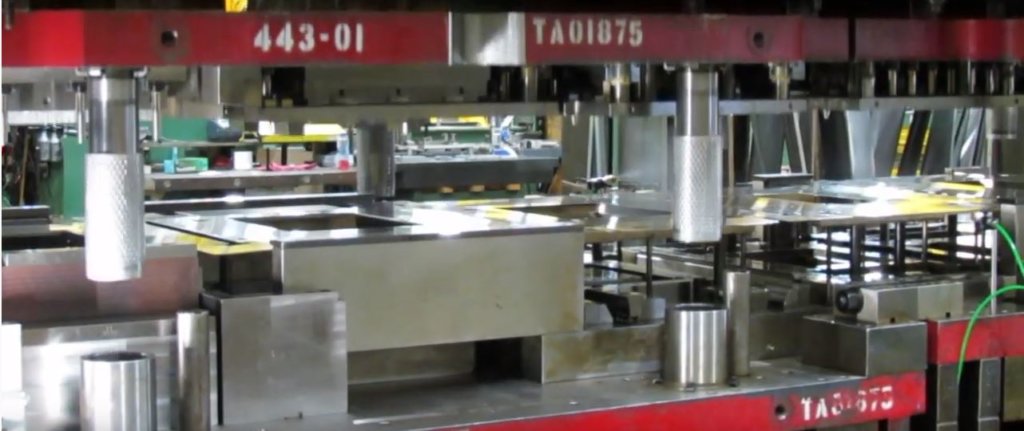Ultra’s weekly stamping meetings focus on Quality, Innovation and Efficiency and help us identify what operations need to be improved on the stamping floor. The improvements outlined in this blog focus on the effects of plastic coating on a stainless-steel side table for an appliance manufacturer in the 800-ton stamping press. The plastic protects the cosmetic integrity of the part during the stamping process and delivery. However, as plastic-related issues began to grow there was concern it could lead to unacceptable levels of rejects.
Action Steps to Improve Quality
- Relieved the surface area on specific die blocks. The plastic was being exposed to continuous hitting and feeding against the metal die. This was causing the plastic to deteriorate, and debris was beginning to collect on the table and in the die; leading to production and cosmetic issues. This modification resulted in less plastic being hit against the metal; resulting in more plastic staying intact.
- Implemented permanent sprayers on the tooling die by attaching them to a threading rod for more consistent and precise cleaning of the side table during the stamping process. Previously, the placement of the sprayer was set by the stamping operator in the press and this could vary depending on the individual. The sprayer attached to the die established a permanent location that was controlled by our in-die programming.
- Introduced a “vacuum like” operation into the last station of the tooling die. This provides a thorough removal of all plastic debris for final output.
VIDEO: These initiatives resulted in a 60% PRODUCTION RATE INCREASE for these side tables.
